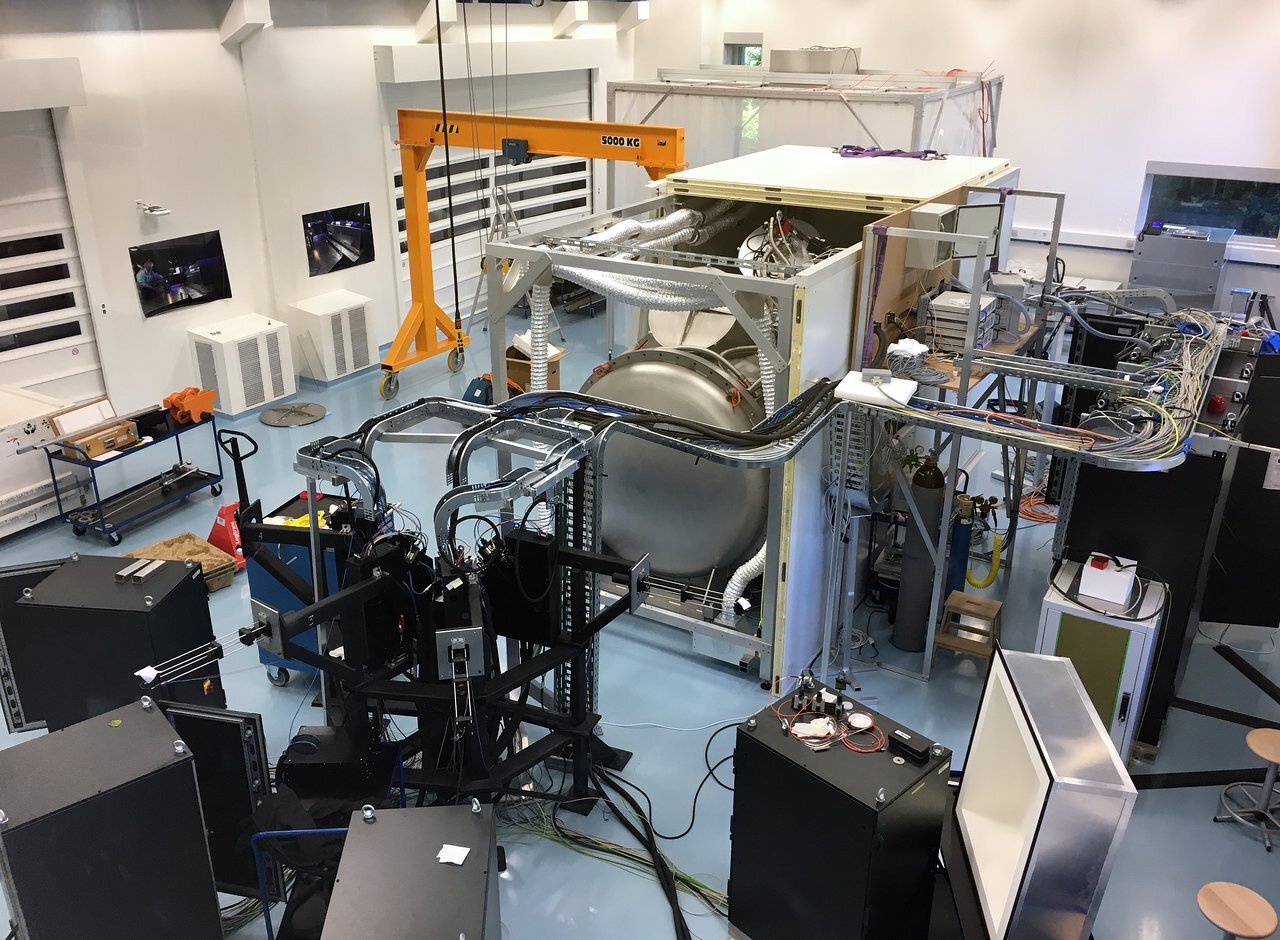7.10.2024
A team of scientists including researchers from the University of Bern, the University of
Geneva and the NCCR PlanetS used the ESPRESSO Spectrograph to discover a sub-Earth
mass exoplanet orbiting Barnard's star, the second-closest star system to the Sun. This
discovery helps to understand planetary formation around red dwarfs and provides insights
into the diversity of planetary systems in our cosmic neighbourhood.

ESO ESPRESSO
Astronomers have discovered an exoplanet less massive than Earth orbiting Barnard's Star. It is the
second closest star system to the Sun after the Alpha Centauri system. This discovery is interesting
not only because of its proximity – just six light-years – but also because Barnard's Star is a red dwarf,
the most common type of star in our galaxy. It is therefore helping scientists to understand the
diversity of planetary systems in our close cosmic neighbourhood, while providing a unique
opportunity to gain a better understanding of the mechanisms involved in the formation and evolution
of planets close to their star.
The discovery of Barnard b, which is at least half the mass of Venus, adds to the growing list of low-
mass planets around red dwarfs, underlining the prevalence of these systems. The study was carried
out by the ESPRESSO consortium with the Guaranteed Time Observations (GTO), which includes the
two host institutes of the National Centre of Competence in Research NCCR PlanetS, the University of
Bern and the University of Geneva. The team of astronomers made the discovery after four years of
observations with ESPRESSO, the high-resolution spectrograph mounted on ESO's Very Large
Telescope (VLT). The results are published in the journal Astronomy & Astrophysics.
Unveiling the Mystery of Barnard b
Barnard's Star is a prime target in the search for exoplanets due to its proximity and its status as a red
dwarf, a common type of star where low-mass planets are often found. Despite a promising signal
detected in 2018, no planet had been definitively confirmed around it until now. The ESPRESSO
spectrograph, with its unprecedented precision, enabled the astronomers to detect Barnard b, a
subterrestrial planet that orbits the star in 3.15 days. The team also identified signals indicating the
possible presence of three other candidate exoplanets, which have yet to be confirmed.
“The discovery of Barnard b is important not only because it is one of the smallest exoplanets we have
detected, but also because it lies in our stellar neighbourhood”, explains Prof. Yann Alibert, co-director
of the Centre for Space and Habitability (CSH) at the University of Bern and co-author of the study.
“This gives us a unique opportunity to study planets that are close to us and to better understand their
formation and migration.
Four years of high-precision observations
The study was based on the radial velocity method, according to which the gravitational attraction of
an orbiting planet causes its host star to oscillate, which has an effect on the characteristics of the light
it emits. By measuring the tiny changes in the light from Barnard's star, the astronomers were able to
confirm the existence of Barnard b, which is twenty times closer to its star than Mercury is to the Sun.
“ESPRESSO played a crucial role in this discovery,” notes Melissa Hobson, a postdoctoral researcher
in the Department of Astronomy at the University of Geneva and co-author of the study. “The precision
achieved by this instrument allowed us to detect the small signals from Barnard b, proving once again
that red dwarfs are excellent targets for discovering low-mass planets.”
The study was designed based on four years of observations with ESPRESSO, as well as data from
instruments such as HARPS, HARPS-N and CARMENES. The combined efforts and the vast data set
enabled the researchers to detect a periodic variation of just 2 km/h in the measured speed of the star,
which is due to the presence of the planet.
An abundance of planets around Red Dwarfs
The discovery of Barnard b contributes to our understanding of planetary systems around red dwarfs
and reinforces the idea that low-mass planets, including sub-Earths, are abundant around this type of
star. Although Barnard b is too close to its star to host liquid water, with a surface temperature of
around 125°C, its detection opens up new prospects for the study of this type of planet. “We now know
that low-mass planets are common around red dwarfs, and Barnard's star is no exception,” says João
Faria, a Research & Teaching fellow in the astronomy department at the University of Geneva and co-
author of the study. “This discovery provides a new playing field to test our understanding of the
formation of these planets and their evolution over time.”
Looking to the future
This discovery underlines the importance of high-precision instruments such as ESPRESSO in
advancing our understanding of planetary systems. The instrument, which was largely developed at
Swiss universities, is currently the only spectrograph capable of measuring the speed of stars to an
accuracy of a few 10 cm/s (i.e. 0.36 km/h). The results obtained with Barnard's Star have important
implications for the study of exoplanets, in particular for the identification of potentially habitable
planets in nearby systems.
“Our research is helping us to map the diversity of planetary systems that exist in the vicinity of the
Earth,” explains Alibert. “The discovery of Barnard b, as well as other nearby planets such as Proxima
b, shows that our stellar neighbourhood is full of small rocky planets, which are crucial to our
understanding of planetary diversity.”
The next step for the research team is to continue observing Barnard's Star with even greater
precision. The possibility of three other planets orbiting it adds a new layer of intrigue, as confirmation
of these planets would provide even more information about the dynamics and composition of the
system. ESO's Extremely Large Telescope (ELT), currently under construction, should provide even
more detailed data in a few years' time.
Quelle: University Bern
